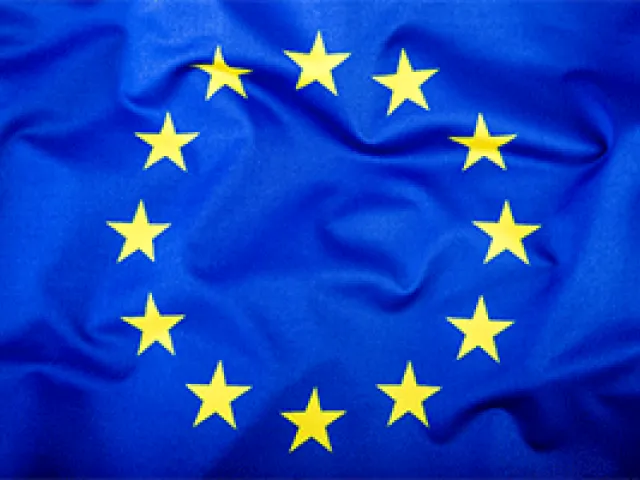Table of contents
This is a compilation of the recent regulatory updates for China. Every week, we post an update of what's new, which you can view here.
2023
- June 5: The National Medical Products Administration (NMPA) awarded Beijing Suyan Technology Co., Ltd., the tender for constructing the National Drug Traceability Collaborative Service Platform and the National Drug Traceability Supervision System.
- May 1: The NMPA issued a tender announcement for constructing the Collaborative Service Platform, the middle “tier” of the country’s overall traceability architecture. The NMPA has also begun to crack down on violations to the country’s Online Drug Sales regulations.
- April 24: The NMPA is moving toward the construction of the Collaborative Service Platform, which will provide drug code management and sharing services for enterprise regulatory and traceability systems.
2022
- September 12: The government passed Decree 58, which governs online sales of prescription and non-prescription medicines. The regulation will go into effect in December of 2022.
- September 5: The GS1 China workgroup is clarifying the recently-published NMPA specifications and deadlines on marking and consumer queries.
- July 3: The NMPA published two additional technical specifications on serialization and consumer data queries/data display from serialized barcodes. The announcement imposed deadlines for the implementation of the serialization (drug traceability code) specification, starting on June 23, 2023.
- June 5: The submission deadline for the new Annual Drug Report for the year of 2021 has been set for August 31, 2022.
- May 1: The NMPA has continued to build its “Smart Supervision” framework:
- On April 12, it launched its Drug Annual Report portal for MAHs.
- It issued a call for case studies from provinces and academic centers to showcase “smart supervision” initiatives and research.
- It concluded a public consultation on a draft 50-point checklist for MAHs to comply with the Drug Administration Law and Vaccines Management Law. The requirements reference traceability.
- January 9: The National Medical Products Administration (NMPA) launched a tender for a “pharmaceutical administrative law supervision system” to be completed within 8 months. TraceLink is looking for further information to determine if this system is linked to traceability or the Collaborative Service Platform.
- January 2: The National Medical Products Administration (NMPA) recently closed its second round of public consultation on “Measures for the Supervision and Administration of Drug Operations and Quality” to implement the Drug Administration Law. The NMPA views this consultation as a “perfecting” review subsequent to its first September 2019 consultation. No traceability dates or system readiness dates were communicated in the consultation and the NMPA did not state when the final version would be published.
2021
- October 31: The National Medical Products Administration’s (NMPA) Drug Recalls process consultation ended on Friday, October 29, 2021.
- October 24: The National Medical Products Administration’s (NMPA) Drug Recalls process consultation remains open until October 29, 2021.
- October 17: The National Medical Products Administration (NMPA) has opened a consultation on the Drug Recalls process until October 29, 2021.
- October 3: The National Medical Products Administration (NMPA) has opened a consultation on the Drug Recalls process until October 29, 2021.
- July 18: The NMPA ends its feedback period on July 20 for the two draft standards it published on Drug Traceability Code printing and on Consumer Query display. No additional information on overall traceability deadlines or intermediate deadlines has been published.
- July 11: The National Medical Products Administration (NMPA) ends its feedback period on July 20 for the two draft standards it published on Drug Traceability Code printing and on Consumer Query display. No additional information on overall traceability deadlines or intermediate deadlines has been published.
- July 4: The National Medical Products Administration (NMPA) has published two new standards on drug traceability for comment by July 20. No additional information on overall traceability deadlines or intermediate deadlines has been published.
- June 27: The National Medical Products Administration (NMPA) has published two new standards on drug traceability for comment by July 20. These are in addition to the ten standards published between 2019 and 2020.
- May 23: The China State Council published an extensive article on drug supervision, alluding strongly to the government’s ambition to become a more powerful world player in pharma and adopt international standards.
- January 3: The National Medical Products Administration (NMPA) held a seminar on printing specifications of drug traceability codes, with two draft standards under discussion: “Principles for Printing of Drug Traceability Codes” and “Specifications for Public Search Results of Drug Traceability Codes.”
2020
- August 30: China's National Medical Products Administration (NMPA) announced that the implementation of serialization and traceability requirements will begin on December 31, 2020.
- April 19: China's National Medical Products Administration (NMPA) published a long list of regulations related to pharmaceutical production and medicine traceability. The decree goes into effect on July 1, 2020.
- March 15: China’s National Medical Products Administration (NMPA) released technical guidelines for implementation of the country’s Drug Administration Law. The NMPA is expected to provide additional details in the second quarter of 2020.
2019
- December 15: The government of China is mandating that full track and trace of saleable vaccine units must be achieved by the industry by March 31, 2020, according to a joint notice issued by the National Medical Products Administration and the National Health Commission. The notice also includes details on current track and trace pilots and connectivity to collaborative service platforms.
- November 10: China's National Medical Products Administration (NMPA) announced that new vaccine identification and traceability requirements will go into effect in March 2020. The deadline follows the enactment of China’s new vaccines law, which goes into effect next month and create new requirements for producing, distributing, and using vaccines.
- September 15: China’s National Medical Products Administration (NMPA) has published five new technical guidelines for drug traceability, which creates the potential for the Chinese government to publish a finalized law that provides additional details on regulations and deadlines.
- September 1: China's National Medical Product Administration (NMPA) has published the last two technical guidance documents needed for implementation of the country’s new vaccine administration law. The new law, which was passed in June, creates regulatory requirements for researching, producing, distributing, using, and tracking vaccines. The law goes into effect on Dec 1, 2019.
- July 21: The government published an intention to require a Unique Public Identity on medicines for public procurement in Hong Kong. A survey is being executed to judge industry requirements and readiness.
- July 7: The National Healthcare Security Administration published two notices on the standardization of drug and medical device information maintenance, including one regarding the implementation of information business coding standards in healthcare by 2020 for disease diagnosis, surgical operations, medical device items, drugs, and medical supplies.
- July 7: The National People’s Congress (NPC) published its new vaccine law which has been being worked on in parallel with the drug traceability law. This will establish a full national vaccine electric traceability platform with integrated identification and traceability of vaccine production, distribution, and use (vaccinations). The law comes into force on December 1, 2019.
- March 31: On March 27, 16 associations (including pharmaceutical manufacturers, distributors, and hospitals) announced their initiative to use the Global Data Standard for full track and trace of pharmaceuticals.
- February 24: The National Medical Products Administration (NMPA), which was formerly known as the CFDA, held IT departmental meetings in February to review the current status of the Drug Traceability Information System plans along with the current rules and regulatory document status. This meeting reinforced the expectation that medicines could use either existing eCoding or new GS1 GTIN standards for serialization.
- January 13: Draft guidance was circulated for vaccine identification and traceability after findings of faulty vaccines and fake labels. The draft was submitted to the bimonthly legislative session of the Standing Committee of the National People's Congress after it was approved by China's cabinet.
2018
- November 18: The Government published a new rule on Chinese Vaccine Management for public commentary, which is related to the previous pharmaceutical traceability project. The government would like to develop a vaccine traceability system and is seeking input on data elements and an information sharing model.
- November 18: The National Medical Products Administration has launched a new website for information sharing with the public and stakeholders. The first piece of information published on the site was a summary of the previous guidance for the forthcoming medicine traceability system.
- November 4: The China National Drug Adminstration published a new update this week on the China drug traceability system requirements. The updated guidance notes that a full end to end traceability system will be implemented for Chinese medicines. The 2022 date in the previous publication still stands, but it was reinforced that certain classes of medicines (vaccines; narcotic/psychotropic drugs; essential medicines; and those with medical insurance reimbursement) should be phased in earlier or given priority.
- September 2: Feedback from Chinese sources is that initial regulatory requirements documents were intentionally left vague to give stakeholders multiple options in how to approach compliance, including potentially different coding formats and barcode data carriers. There is industry concern around both the lack of clarity and the possibility that the requirements could change late in the game.
- August 26: New draft traceability system guidelines and coding requirements were announced with a full implementation across all medicines slated for 2022. Public feedback of the guidelines and requirements are due 9/22.
- August 5: The CNDA IT center (China National Drug Administration, which was formally the CFDA) has been tasked with developing the drug traceability process and codes. The China Association of Pharmaceutical Commerce (CAPC) is developing a recommendation paper by the end of August on the requirements for this process. GS1 Public Policy is working to support CAPC in aligning to GS1 standards wherever possible. This is all part of the previously discussed 2020 goals for China identification and traceability.
- July 15: CFDA visited GS1UK to talk about GS1 standards work in other regulatory regimes.
- June 3: The Finance and Commerce Ministries published a joint notice on improving the modern supply chain. This document is a general statement of principles and tools, and not a regulatory guideline, although GS1 standards are mentioned as potential tools. Government ministries are being solicited to publish their ideas and projects to support the modern supply chain and get federal support. The stated deadline for proposals is June 5 and projects are supposed to be completed by end of 2020 with serialization and track and trace expected to be one of the projects.
- March 4: The initial draft regulations for medical device Unique Device Identifiers were published this week.
- January 7: Following interest expressed by the CFDA on potential consideration of a GS1 standards-based traceability system, GS1 Global Healthcare is launching a stakeholder-driven China proof of concept pilot to highlight how this could work for China. The initial kickoff meeting of the GS1 Global sub-group was held 1/4.








